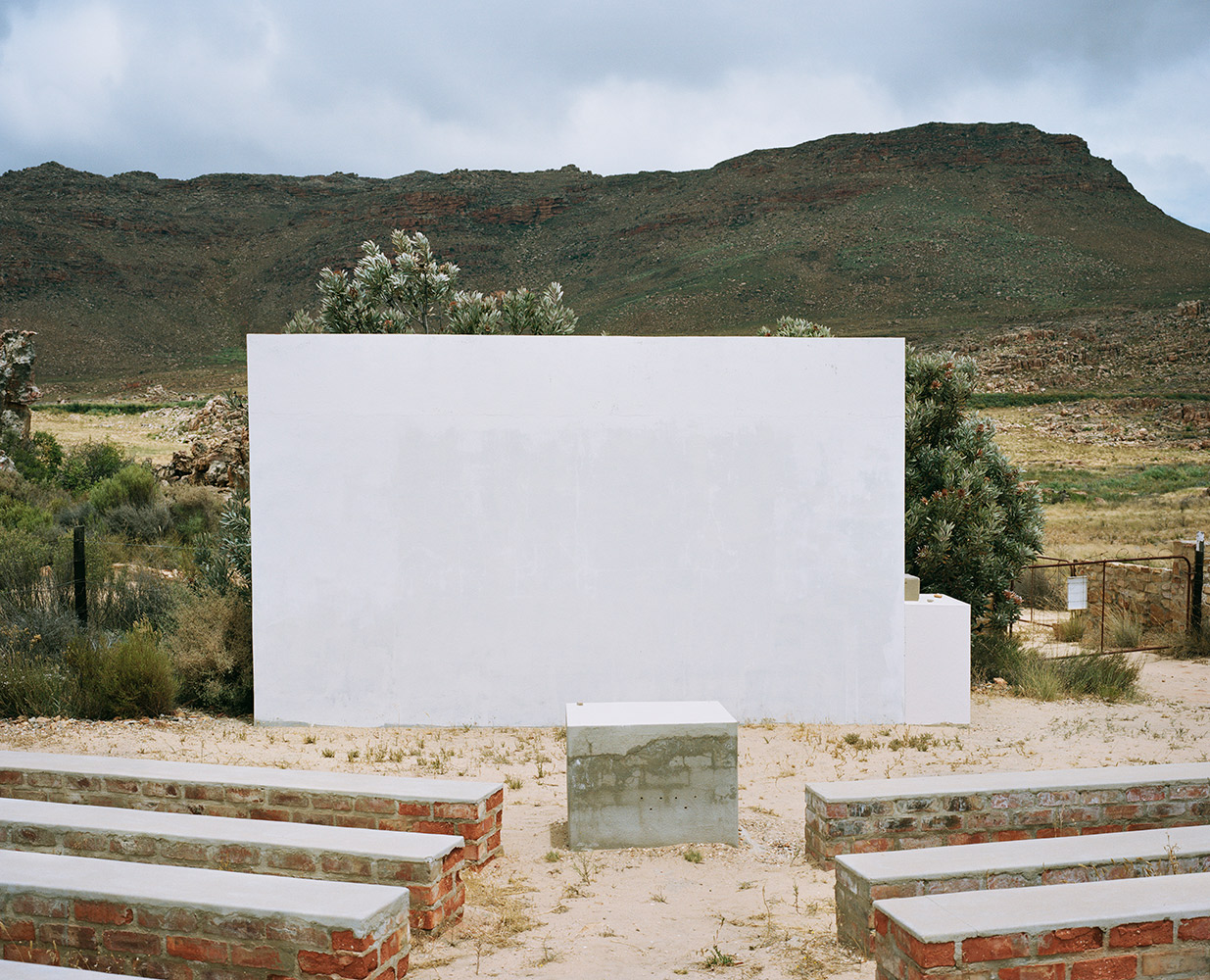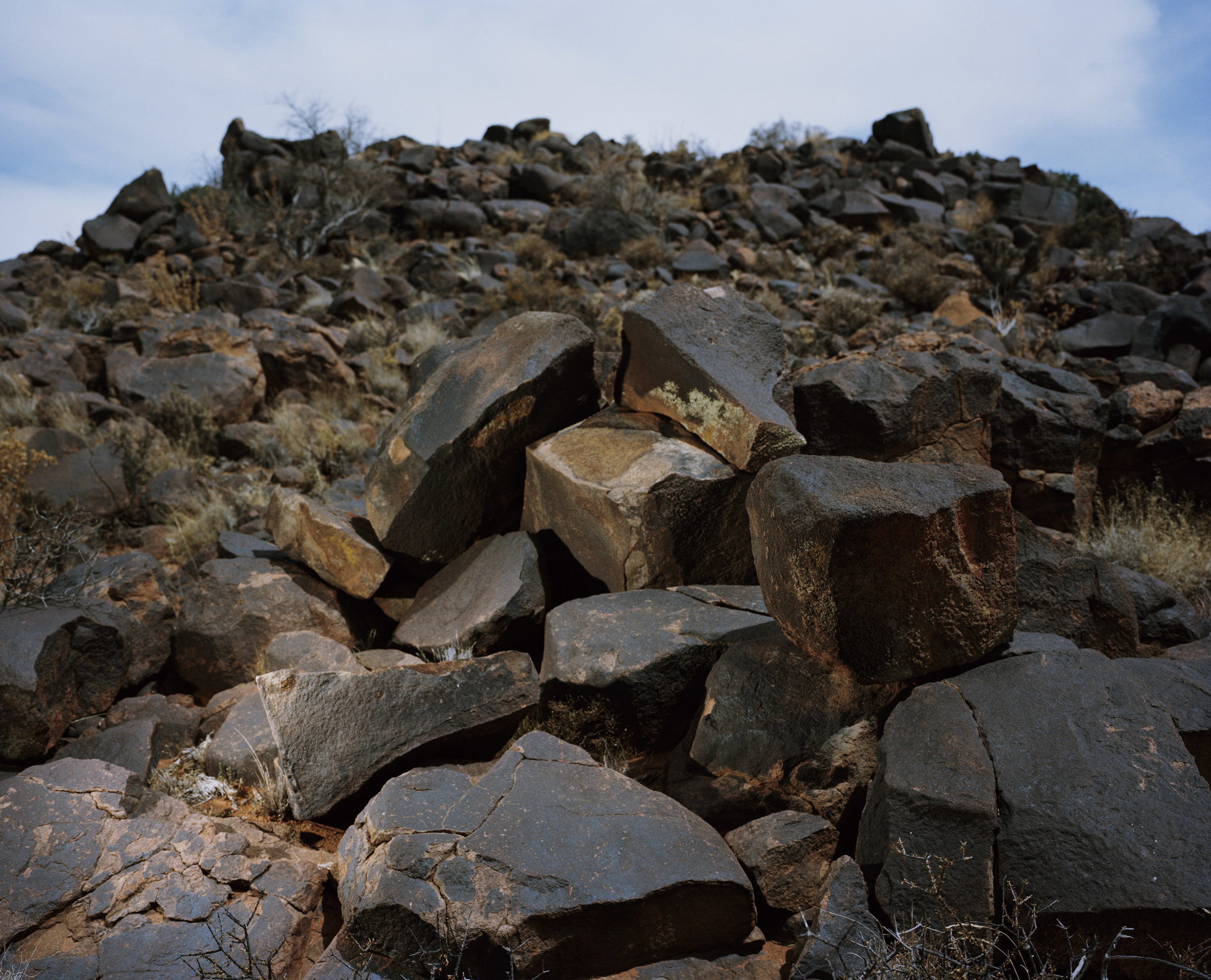'Only in the morning, when the daylight crossed over the highland rocks and fynbos, they saw how strange and otherworldly the hemelblom was. The seeds that fell the previous afternoon shot up incredibly fast, each on a lump of roots that didn't enter the ground, but just gripped the ground from above. In one single night each plant became fully grown and was spreading seeds so that new plants would shoot up. In one night the hemelblomme multiplied a hundredfold. For now it was just strange. Only later it would become frightening.'
From Die Hemelblom (The Heavenly Flower) by Jan Rabie, 2nd edition 1974, Tafelberg, first published 1971. Translated from the original Afrikaans by Nic Grobler.
Photograph inspired by Die Hemelblom (The Heavenly Flower), an Afrikaans sci-fi novel by Jan Rabie.
The Hemelblom was sent to the earth by a concerned galactic council to ensure the survival of life on earth in the face of a new world war. The plant was specifically grown to remove the poisonous elements introduced by humans - feeding on pollution it would rapidly cover the earth and wipe out most of humankind but leave a new earth covered with fresh fertile soil.
CHRIS FORDER, TELESCOPE BUILDER, CEDERBERG ASTRONOMICAL OBSERVATORY
'Are we alone, I don’t know - the thing is we will probably never know. If we find a civilization that can signal to us, we’ve got to be able to signal to them. If they are a 100 light years away we are talking about a 100 years between every communication, and by then the other one may have died out or they may have not reached the communications technology or we may have blown ourselves up enough to have to start all over again. So we will probably not communicate with anyone out there - not in our lifetime. But there is probably someone. We are so proud that we call them aliens - we may be the aliens. Who knows.'
Chris Forder. Amateur Telescope builder.
Read MorePROJECTION SCREEN, CEDERBERG ASTRONOMICAL OBSERVATORY, CEDERBERG
'We all sat down in this amphitheatre - everyone so excited. Waiting for it to start, and then every now and then a car would arrive in the parking lot and its lights would shine onto the screen and then everyone would freak out a bit. This guy gave a presentation, using like Hubble telescope photographs, each and every photo - incredibly impressive full multicoloured images. This all whilst telling us about the telescopes they themselves have built and that we will be able to see Jupiter with them after the presentation. When we eventually went to look through the telescopes - it was all monochrome tiny little things, no multicolored Hubble stuff. Anyway, it was so great though seeing these old guys, listening to Led Zeppelin, who go up there every two weeks, observing through the night. It’s their thing, it is like playing golf to them'
Dennis Williams, visitor to Cederberg Astronomical Observatory.
Read MoreCEDERBERG ASTRONOMICAL OBSERVATORY # 3, CEDERBERG
CEDERBERG ASTRONOMICAL OBSERVATORY # 2, CEDERBERG
‘If you consider there are between 10 and 20 times as many galaxies outside ours as there are stars in our galaxy - and we have maybe 200 billion stars, so multiply that between 10 and 20 and that is the number of galaxies, and each of those may have 200 billion stars. So we are pretty insignificant. If you go and look at a piece of sand outside. That is how insignificant we are. We think we are important but we are not.’
Chris Forder, amateur telescope builder, Cederberg Astronomical Observatory partner.
Read MoreCEDERBERG ASTRONOMICAL OBSERVATORY # 1, CEDERBERG
‘Are we alone, I don’t know - the thing is, we will probably never know. If we find a civilization that can signal to us we’ve got to be able to signal to them. If they are a 100 light years away we are talking about a 100 years between every communication, and by then the other one may have died out or they may have not reached the communications technology or we may have blown ourselves up enough to have to start all over again. So we will probably not communicate with anyone out there - not in our lifetime. But there is probably someone. We are so proud that we call them aliens - we may be the aliens. Who knows.’
Chris Forder, amateur telescope builder, Cederberg Astronomical Observatory partner.
Read MoreBLACK ROCKS, CLOSE TO CALVINIA AND AT LIVING LANDSCAPE PROJECT CLANWILLIAM NORTHERN CAPE
These rocks contain a high percentage of iron and their dark appearance forms a truly ancient landscape. The rocks make a metal sound when played; they are referred to with different names such as ‘rock gongs’, ‘ringing rocks’ or even ‘bushman pianos’. Found in various areas around the world and Africa, tradition formed around communicating with the help of the rocks - evident by the ancient drumming marks often found on them.
Read MoreBLACK ROCKS # 3, BETWEEN CALVINIA AND WILLISTON, NORTHERN CAPE
These rocks contain a high percentage of iron and their dark appearance forms a truly ancient landscape. The rocks make a metal sound when played; they are referred to with different names such as ‘rock gongs’, ‘ringing rocks’ or even ‘bushman pianos’. Found in various areas around the world and Africa, tradition formed around communicating with the help of the rocks - evident by the ancient drumming marks often found on them.
Read MoreBIG MOON # 2 (ASTROGRAPHIC TELESCOPE BUILDING 1890) SAAO OBSERVATORY, CAPE TOWN
This photograph was taken during the night of 14 November 2016, with the biggest supermoon since 1948. When a full moon takes place when the Moon is near its closest approach to Earth, it is called a Supermoon. The next super moon similar to this will only take place in 2034. Supermoons generally appear 14% bigger and 30% brighter than other full moons.
Read MoreBIG MOON # 1 (MC CLEAN TELESCOPE), SAAO, OBSERVATORY, CAPE TOWN
McClean telescope installed in 1897 at the South African Astronomical Observatory in Cape Town.
Read MoreANNA SKIPPERS # 3, SUTHERLAND, NORTHERN CAPE
'That was the most beautiful to me, when there is a shooting star, I always believed you could make wish - for good luck. Then I asked some questions and they answered; 'Oh, no, when there is a shooting star, it means it is dead and it is going to fall' and there where it falls, everything must just pray and ask 'God don't let it fall on a house, don't let it fall on a person' - because it can burn and kill, and you don't know if it has fire inside, you don't know if it has hail inside or even iron inside.'
Anna Skippers, Kamammas Community Centre Coordinator, Sutherland, Northern Cape
Read MoreANNA SKIPPERS # 1 SUTHERLAND, NORTHERN CAPE
‘That was the most beautiful to me, when there is a shooting star, I always believed you could make wish - for good luck. Then I asked some questions and they answered, ‘o, no - when there is a shooting star, it means it is dead and it is going to fall’ and there where it falls, everything must just pray and ask ‘God don’t let it fall on a house, don’t let it fall on a person’ - because it can burn and kill, and you don’t know if it has fire inside, you don’t know if it has hail inside or even iron inside.’
Anna Skippers, Kamammas Community centre coordinator, Sutherland, Northern Cape.
Anna lives in Sutherland, close to the largest single optical telescope in the Southern Hemisphere.
Read MoreOLD ANALOGUE WORKSTATION, PLANETARIUM, CAPE TOWN
* Makes me think of the heap of equipment hey see when looking back in time in Swart ster oor die Karoo. Perhaps we can include a small quote from the book.
Read MoreTRUITJIESKRAAL CAVES # 9, CEDERBERG
'For real, that is not a shadow, but an upright being squeezed up against the edge. Kind of like a human form with two arms and legs, a narrow, oval face framed by a cap looking like a bare skull, clothed in a blue overall that they only had a glimpse of previously. Dead quiet. Francois lowers the torch, lifts it again. One thing is for sure: this being is just as afraid as they are.'
From Die Hemelblom (The Heavenly Flower) by Jan Rabie, 2nd edition 1974, Tafelberg, first published 1971. Translated from the original Afrikaans by Nic Grobler.
The first encounter with Marwa, the main alien character in Die Hemelblom takes place in a collapsed cave near the Cederberg - she hold hands with the humans to make it out alive.
Read More












